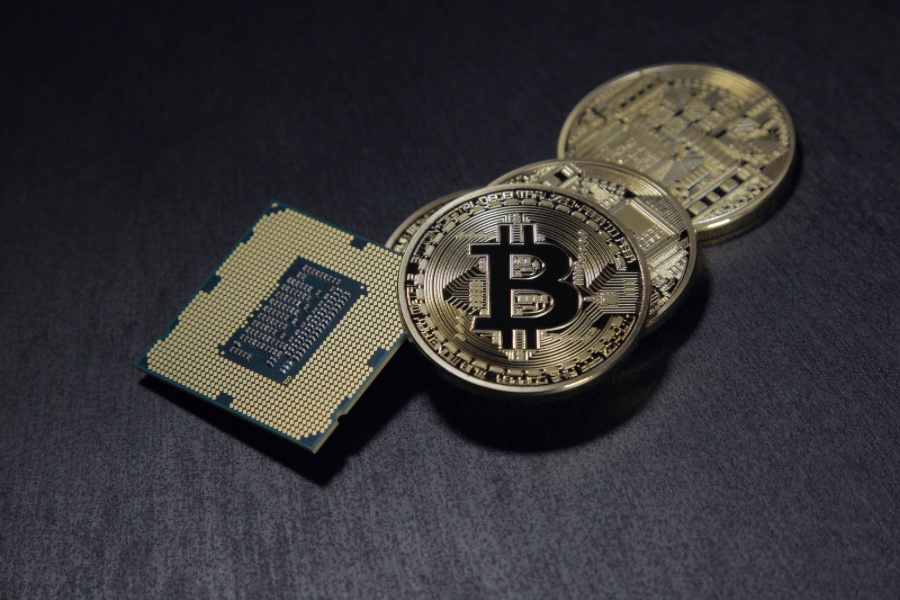BIT Mining in Cash Conservation Mode as Harsh Crypto Winter Rages On

The crypto currency miner’s net loss ballooned in last year’s fourth quarter, as it appears to have sharply slowed its main mining pool business to keep down costs
Key Takeaways:
- BIT Mining’s revenue plunged 88% in the fourth quarter, as its net loss rose more than tenfold
- The company’s crypto assets shrank sharply, indicating it disposed of more crypto currency than it produced, as its main mining pool business appears to have nearly ground to halt
By Warren Yang
As the crypto winter rages on, there aren’t many ways mining companies can warm investors’ hearts. One thing they can do is continue amassing digital assets using any capital they have left, even as weakness of those currencies causes their losses to balloon. The hope is that the hoarding will pay off if and when spring for the industry finally arrives.
For BIT Mining Ltd. (BTCM.US), though, such tactics aren’t really viable as it fast depletes its cash. This means the company is in a helpless situation where it can only hope to hunker down around its fast-disappearing cash pile and hope that spring comes sooner rather than later.
BIT Mining’s latest quarterly earnings, released last Friday, illustrate the company’s conundrum quite vividly. Its revenue plunged about 88% year-over-year to just $61 million in last year’s fourth quarter. Not surprisingly, the company’s net loss for the three-month period ballooned more than tenfold to about $123 million. For the whole of 2022, the crypto miner’s revenue more than halved to $650 million from the prior year, while its net loss more than tripled to $170 million.
Such dismal results are the norm these days for most crypto companies, given the deep slump that has ravaged the industry since last summer. The big problem for BIT Mining is that its main mining business appears to have all but ground to a halt. The company’s digital assets were worth just $15 million at the end of last year, down sharply from $55 million a year earlier.
A drop in the value of a crypto miner’s assets alone doesn’t necessarily mean its operations slowed. Obviously, if the prices of cryptocurrencies fall sharply, as they did last year, a portfolio’s overall value could fall even if new assets are added. But that doesn’t seem to be the case for BIT Mining. Its bitcoin holdings at the end of last year shrank more than 36% in number to 289 units, while its stock of ether, which the company is focusing on, decreased about 18% to 4,845 units.
The decreases indicate that BIT Mining disposed of more assets than it produced. BIT Mining said it made a net gain of about $2 million from sales of cryptocurrencies in the fourth quarter.
What’s not said explicitly, but would be revealing if true, is that the company appears to have pretty much put the brakes on its core mining pool business, which accounts for the bulk of its revenue. Such a sharp slowdown appears to have happened based on the fact that costs associated with that operation dropped 85% in the fourth quarter from a year earlier. The company recognizes the value of new cryptocurrencies minted by its pool operation as revenue, and then pays out mining rewards to pool participants and books those as costs. Those mining rewards make up a big chunk of BIT Mining’s operating expenses.
This is why an 84% drop in the company’s operating expenses in the fourth quarter is more worrying than encouraging, since it shows the company is paying far less to its pool mining participants as their activity drops.
High energy costs
Other costs, such as administrative expenses, pale in comparison to those for the mining operation, and any decreases in those are relatively minor. In other words, BIT Mining can’t really cut costs drastically without sacrificing its main mining pool business, hence our assertion that the plunging costs reflects a big pullback in that operation.
Another major cost for crypto miners is energy, whose prices have gone up steeply following Russia’s invasion of Ukraine. And the more mining a company does, the more computing power it needs and the larger its energy bill will be. Thus, the combination of higher power costs and depressed cryptocurrency prices mean BIT Mining’s losses might only worsen if it ramps up its mining activities, depleting its already-rapidly shrinking cash pile even faster. At the end of last year, its cash and cash equivalents dropped to just $5.4 million from nearly $20 million a year earlier, even though the company raised $9.3 million in a new share sale last August.
BIT Mining, which was originally an online lottery ticket seller that transformed into a crypto miner in 2021, does have other operations. It mines its own cryptocurrencies in addition to the pool business. It also makes mining machines and runs data centers. But revenue contributions from these are negligible, and the pool operation accounts for nearly 90% of the company’s total revenue.
In a move that only highlights BIT Mining’s desperation to find any other source of revenue, it invested $2.4 million in short-term bonds as of the end of last year – something it had never done in prior years. Probably helped by those investments, the company earned $150,000 in interest income last year.
Unlike BIT Mining, some of the world’s largest crypto miners have actually been increasing their activity lately to produce more digital assets. Among them, U.S.-based Riot Platforms (RIOT.US), despite losing money in the first nine months of last year, minted 55% more units of bitcoin last December than a year earlier. It held nearly 7,000 units of the bellwether crypto currency at the end of last year, even after selling about 600 to generate $10 million in December. Another U.S.-based miner, Marathon Digital Holdings (MARA.US), also produced 30% more bitcoin last year than in 2021, even though its net loss ballooned.
Although BIT Mining’s last quarterly results hardly featured any achievement to cheer, its stock jumped nearly 7% on the day the report was released, probably because the price of bitcoin jumped. Yet the stock trades at a rock-bottom price-to-sales (P/S) ratio of just 0.02, a tiny fraction of the 2.8 for Riot and 5.2 for Marathon.
Understanding why such a large valuation gap exists doesn’t take rocket science, as BIT Mining appears to be living on borrowed time and could quickly run out of options if the crypto market doesn’t get on a more solid footing soon. The company may find some comfort in the fact that crypto prices appear to have bottomed out and have staged mini rallies lately. Still, whether that marks the start of a new spring for crypto markets remains anyone’s guess, meaning BIT Mining’s fortunes will be up in the air.
To subscribe to Bamboo Works free weekly newsletter, click here






